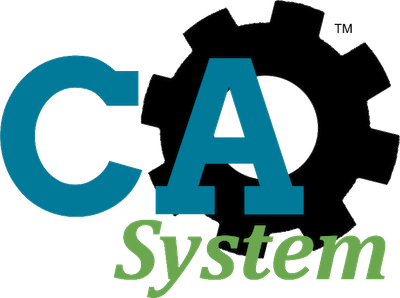The Evidence that Agility is Mostly Behavioral
We examined five highly agile companies (shown at the right). There are agile in the sense that all five of these companies have shown an ability to rapidly pivot on their products and market, and some have shown the ability to rapidly pivot on their infrastructure and their suppliers.
We looked for common threads in how these companies do things. What we found was that, while each company was operationally quite different — they did not use similar processes — there were cultural similarities in many ways. In particular, we found these common behaviors.
✓ Cultural expectation that people will solve problems.
✓ Cultural expectation that people will not wait.
✓ Cultural expectation that people will go out of their lane.
✓ Cultural expectation that people will talk to whoever they need to – not ask permission.
✓ Cultural expectation that people will prudently try things before being completely sure it will work.
✓ Cultural expectation that people will think holistically, rather than only on “their piece”.
The shared traits were all behavioral — not processes or frameworks.
As Bjarte Bogsnes writes in his seminal book Implementing Beyond Budgeting,
Let us then take a look at the roundabout, which represents a very different way of managing traffic, but with exactly the same purpose—a safe and smooth flow.
He then goes on to explain that roundabouts dispense with the step-by-step control that traffic lights provide, and instead allow people to navigate an intersection on their own. But to do that requires higher skill: getting safely through a roundabout requires more skill and driving experience than waiting for traffic lights.
In other words, if people are given higher skill and judgment, you can remove controls, and allow them to self-manage more. The work becomes behavioral, just as people’s behavior in a roundabout is what enables them to pass through it safely, or not.
How to Create True Agility and Maximum Effectiveness
It’s all about the people, beginning with the people in leadership roles. If you improve how they lead, and specifically focus on leadership skills that are important for agility, the impact will be enormous.
That’s why the Constructive AgilityⓇ System is a developmental learning system. It is designed to improve how your people lead, giving them the behavioral and cognitive skills that will make the most difference.
Comparison of Highly Agile Companies
Supporting Research
The Research of Dr. Nicole Forsgren

Dr. Forsgren’s groundbreaking research into high performing teams at tech companies revealed that the most effective teams have transformational leaders.
But the research also found that good leadership, while usually necessary, was not enough: people also need to know patters for being effective. That's why the Constructive Agility model includes behavior and knoweldge. Those in turn become embedded in the organization's culture.
The Research of Dr. Steve Wolff
Dr. Steve Wolff has been studying the effectiveness of teams for two decades. His powerful descriptive model, the Inspired Teams Framework, is an adaptive leadership model that considers psychological safety, trust, identity, shared values, acceptance, purpose, and a range of other factors and outcomes. It is an empirically derived behavioral view of what causes people to work together effectively. The work has been done in collaboration with Texas A&M University, Boston University, and Case Western Reserve University.
The Research of Professor Emeritus Dr. Robb Cooke on the Effectiveness of Organizational Cultures
Dr. Cooke is CEO of organizational culture experts Human Synergistics. Their cultural assessments have been used with more than 30,000 organizations, spanning 50 years. Their Organizational Effectiveness Inventory assessment measures actual agility, in terms of the ability to quickly identify the need for change, and respond quickly and efficaciously.
Agile 2 Academy has been able to link the Human Synergistics cultural model to Agile 2 behaviors. See Agile 2 Behaviors and Their Cultural Prerequisites in Architect the Culture.
Much More!
There is a wealth of research on leadership and decision-making that shows very clearly that the ability to rapidly change direction, intelligently, is based on behavior, particularly the behavior of leaders, including the incentives they create, the expectations that they set, and how they themselves respond to situations.




